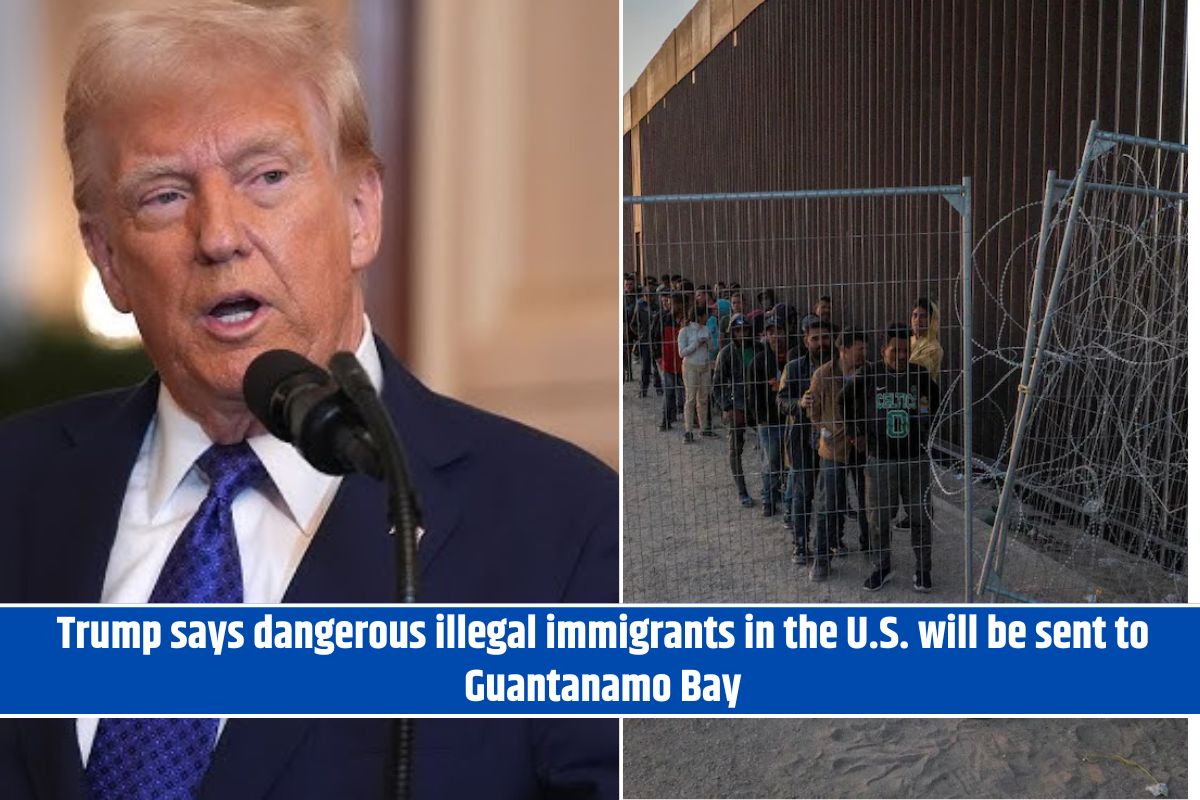Former U.S. President Donald Trump has announced an executive order directing the Pentagon and the Department of Homeland Security to prepare Guantanamo Bay for detaining migrants with serious criminal records.
The move comes as part of a broader immigration policy aimed at tightening border security and addressing crime concerns related to undocumented immigrants. The announcement was made at the White House before Trump signed the Laken Riley Act, a law mandating stricter detention policies for noncitizens charged with burglary, larceny, theft, or shoplifting.
Guantanamo Bay to Hold Criminal Migrants
Trump stated that Guantanamo Bay has thousands of available beds and will be used to detain the “worst criminal illegal aliens” who pose a threat to Americans. He suggested that some individuals are too dangerous to be held in their home countries, leading to the decision to transfer them to the U.S. military base in Cuba.
While Trump claimed there are 30,000 beds available at Guantanamo, there is no confirmed data supporting this number. The base currently holds terrorism suspects, and its capacity for migrant detention remains uncertain.
The Laken Riley Act: Stricter Immigration Rules
The announcement coincided with the signing of the Laken Riley Act, named after a 22-year-old nursing student who was murdered by an undocumented Venezuelan immigrant. The law expands mandatory detention to include noncitizens accused of specific crimes, tightening immigration enforcement. This reflects Trump’s broader stance on immigration and crime prevention.
Guantanamo’s History in Migrant Detention
Guantanamo Bay has a history of being used for migrant detention. In the early 1990s, thousands of Haitian migrants were housed there, including individuals diagnosed with HIV who were barred from entering the U.S.
The base also has a Migrant Operations Center, where asylum-seekers intercepted at sea undergo interviews for potential resettlement in third countries like Australia. However, they are not permitted entry into the U.S.
Trump’s Border Policy and Expansion Plans
Tom Homan, the former U.S. immigration enforcement official known as Trump’s “border czar,” suggested that the new policy would lead to an expansion of Guantanamo’s migrant detention facilities. This aligns with Trump’s history of advocating strict immigration policies and using executive orders to enforce them.
Cuba’s Reaction to the Decision
Cuba strongly opposed Trump’s decision. Cuban President Miguel Díaz-Canel condemned the move, calling it an “act of brutality.” He criticized the U.S. for imprisoning migrants in what he described as “illegally occupied territory” and likened it to the controversial detention of terrorism suspects at the base. Cuba has long opposed the U.S. presence at Guantanamo, and this latest development is likely to strain relations further.
Trump’s executive order to use Guantanamo Bay as a migrant detention facility marks a significant shift in U.S. immigration policy. While his administration argues that the move is necessary to keep Americans safe, the plan faces logistical, legal, and diplomatic challenges.
The exact details of how the facility will be used remain unclear, but it has already sparked international criticism, particularly from Cuba. As the debate over immigration enforcement continues, this decision is likely to be a focal point of political and humanitarian discussions.
